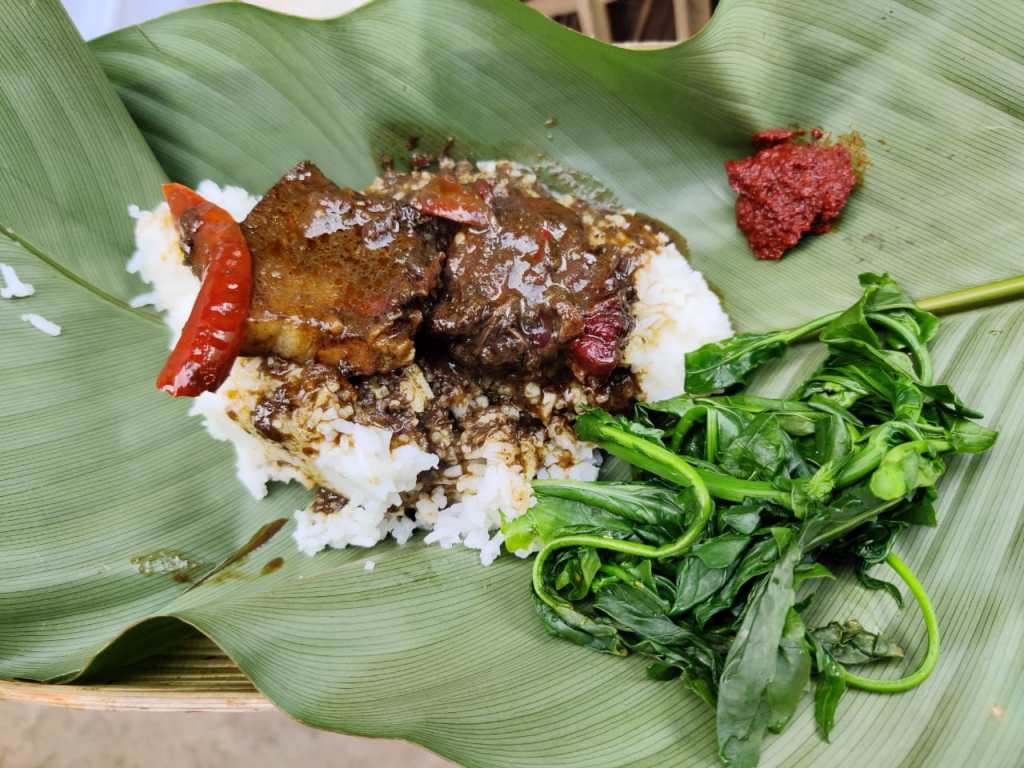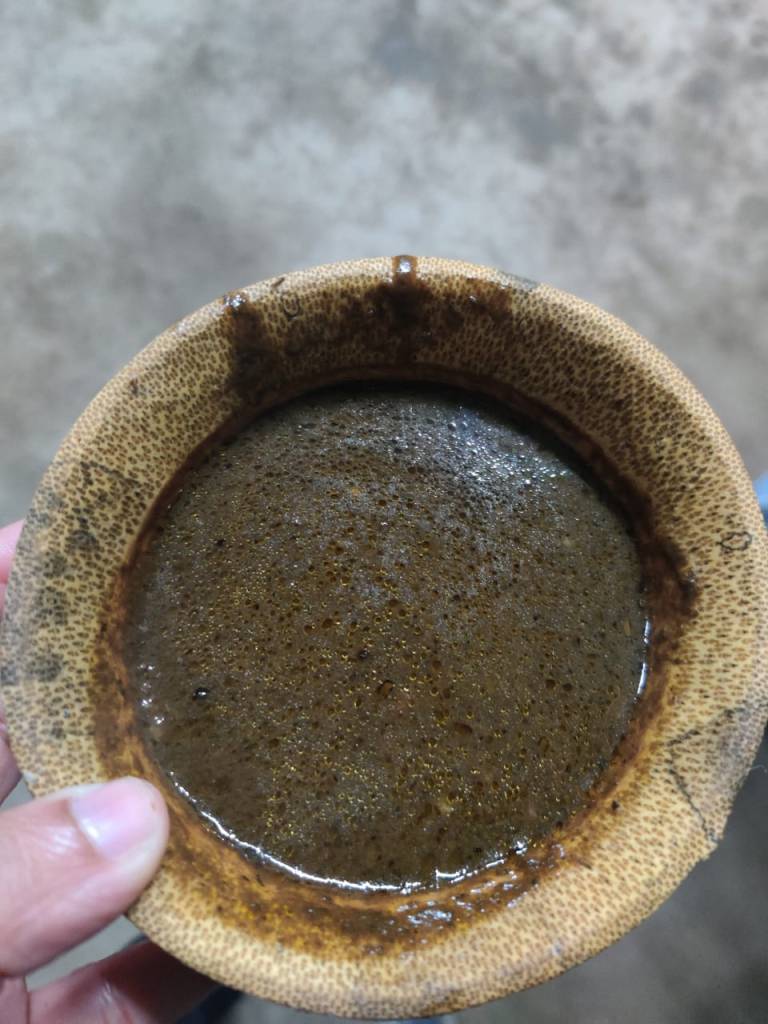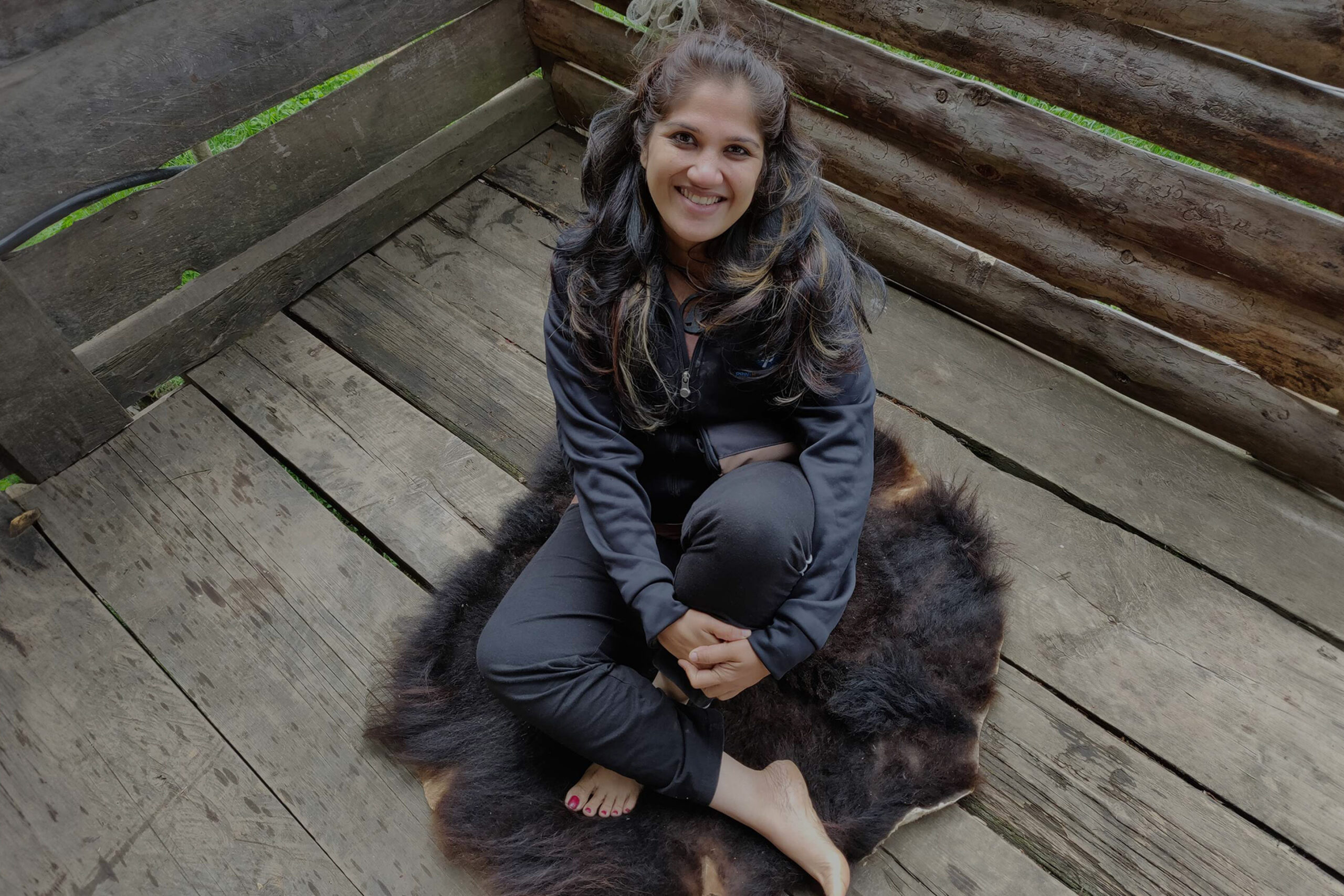Nagaland- the land of tribals. The majority of people are tribals who still follow their age old customs. There are many tribal groups who live in Nagaland. Each group has different cuisine culture. Hence Nagaland is a paradise for food lovers with countless ethnic dishes to explore. The best time to explore Nagamese cuisines is to attend the Hornbill festival which showcases the cuisines of various tribes along with their cultural shows.
People mainly resided in forest areas. Hence their cuisines revolved around the plants and animals that were easily available in the forest. Rice, pork, chicken, dog, insects, worms, vegetables, chilli sauce are essentials of Naga food. Naga food is generally considered spicy due to their love for King chilly or Raja mirchi. They also developed special ways to preserve vegetables and meat like fermenting , smoking etc. They use very less oil for cooking.
Basically a meal consist of :
- Indigenous red or other rice variety
- Meat or Fish dish of some kind – Fresh/smoked/ dry
- Boiled vegetable – a sample soupy dish
- Assorted condiments (largely fermented food / chilli )

Festivals of Nagaland calls for feasting with sumptous serving of meat. According to the locals, a man who did not touch meat was considered not capable of fathering a child.
During Hornbill festival, Morungs or tribal dormitories are set up by each tribe. A wood fuelled fire takes centre place inside the main room of Morung just as it does in their homes in village.Wooden shelfes are build above fire place , on which vegetables and meat are spread for smoke drying. In morungs, the visitors can sample the characteristic delectable cuisines of different Naga tribes.
Unique ingredients
Bamboo shoot – It is mainly used in pork preparation. It is used both dried and fermented form. The fermented form is called Bastenga. Bamboo shoot preparations are mainly made by Lotha tribals.
Axone (fermented soyabean)/ Akhuni (powdered form) – Fresh soyabean is collected and washed. It is then boiled until it becomes soft but is still whole. Excess water is drained and soy is placed in pot / degchi and put out in sun or next to fire to warm and ferment. It usually takes 3-4 days in summer and 1 week in winter . It is judged to be right when the fermented smell comes. soya beans are then placed in wooden pestle and smashed in mortar. It is crusheed partially. Handfull is then scooped up and placed in the centre of a banana leaf and parcelled to be sold or stored next to fire. Each day it darkens more. It is used in preparing vegetable/ smoked pork/ dried river fish/ dried beef etc
Anishi (fermented colocasia leaves and stem)- It is mainly used by Ao tribe. Fresh green leaves are picked and washed. Leaves are then stacked one over the other. It is finally wrapped with banana leaf. it is kept aside for a week till leaves turn yellow. Yellow leaves are then ground into paste and cakes made, dried over fire place.

Smoked pork/ Beef – You can find meat pieces hanging above Naga kitchen. It is made to slowly dry out by the smoke emanating from fire. After few weeks , the meat becomes ready to be consumed. It is crispy out side and is filled with an intensely delicious smokiness
Fermented meat – Naga tribes ferment their food to preserve it. Food is fermented by first boiling it and then putting it out in sun or near fire with axone (fermented soya). The fermented food is then parcelled with a banana leaf and kept over fire.
Naga ethnic cuisines
Pork with bamboo shoots – pork is fried with dry bamboo shoots and a lot of chillies. Bamboo gives the pork a lovely aroma and unique flavour.
Roasted intestines – Pork is an integral part of naga culture. Nothing is wasted and internal organs are most prized possessions.
Bamboo steamed fish – Fish is stuffed in hollow tube of bamboo with a few light spices and placed in the ash of fire to cook. After the fish is cooked , it is emptied out of bamboo into a bowl, ready to be served.
Ayimchu (chicken glutinous soup) – Chicken is cooked in glutionous rice soup. It is called Amsou by Ao tribe.
Bush meat/ dog meat – It is mainly taken for its medicinal value. People with chronic diseases and debilitating conditions take dogs meat to improve their immunity.
Akin choki bo (snail curry) – Akin is a wild herb belonging to mint family. The roasted and ground seeds of akin is cooked with paddy field snails (chokibo). A bit of lard from pork and fermented soya bean is added to it.

Hinkejvu – colocasia, shredded cabbage leaves, mustard leaves, french beans etc boiled in water. Real flavour comes from assorted greens. Just a pinch of salt is added
Akibiye – colocasia, bamboo shoot, mustard leaf . very little water is used as this is preferred thick.
Kongchu – Eel chilli curry – Curry prepared with smoked eel and chilly and spices.
Anphet – sticky rice mixed with pork and yam dried leaves and rolled in banana leaves and steamed. (phom tribe)
Ayakibe – yam, bittergourd curry (Sumi tribe)
Akha – fish curry (Sumi tribe)
Ngo – fish curry of Khamninguan tribe
Changmanchanlhah – sticky rice grinded with sugar and covered with plantain leaves and steamed. (Kuki tribe)
Teluina – Snail and pork curry ( Zeliang tribe)
Arhar – dried beans is fried with chilly and garlic. It is usually served as accompaniment with tea.

Squash -A cucumber like vegetable boiled in water
Silkworm larva fry / curry – It is a delicacy of various tribes
Anna – It is an accompaniment for rice prepared with a grain similar to ragi. It is prepared by grinding with salt
Nadiya – Anna is cooked with sticky rice to make Nadiya.
Chu theru – Chicken prepared in paste of mustard leaves. It is a speciality of Rengma tribe.
Machihan – A dried fish preparation. It contains dried fish, green chilly, tomato and green peas. It is a speciality of lotha tribe
Ongohan – Fish curry of Lotha tribe prepared with redchilly, bamboo juice, garlic, tomato etc.
Kaisu or posk sausage – Pork is mixed with various herbs and made to paste. This paste is filled in the intestine of pig and boiled. The sausage thus obtained is cut and baked in fire. It is a speciality of Chang tribe

Azungken Lon – Beans is prepared with bamboo shoot, chilly etc. It is very astringent in taste. Beans was either half cooked or not cooked at all. I couldnt make out the difference.
Thambu – it is a powder consumed after having food. It is a mixture of various herbs and is very sour. It is supposed to aid in the digestion process.
Gwi chu or Midhun meat fry. Midhun is an anmal resembling bullock/ yak found in the forests of North east. Only rich served midhun meat for feasts. This speciality can be had from morung of Angami tribe.
Sibline Honkhlep – Dry rice cake filled with jaggery and sesame. Rice powder is mixed with water. Dough is then rolled out in circular shape. It is filled with fried sesame and jaggery and rolled into cigar shape. It is then baked and served.
Zutho – rice beer. fermented drink made with rice. Expensive high quality starchy rice is dried and placed in a container and pounded with giant wooden mallets. it is then placed in a cauldron and placed over traditional herth to boil, stirring all the while, Mix is then taken off the fire and stirred as it cools. It is left to cool over night. When ready – 2 handful to a pot ful yeast is pounded and added. It is moved to another part of hut to ferment. It is ready in two days to drink.
Su Khe – Millet brew. It is an alcoholic beverage prepared from millets. (Angami tribe)
Chiepzo Dzu – Wild apple wine is served in the Angami Morung. It is usually has with dried wild apple chips.


For more photos related to my trip please visit https://www.facebook.com/Wind-in-my-hair-308490250040609/
Please follow me in instagram for more information and photos : mitra_windinmyhair

